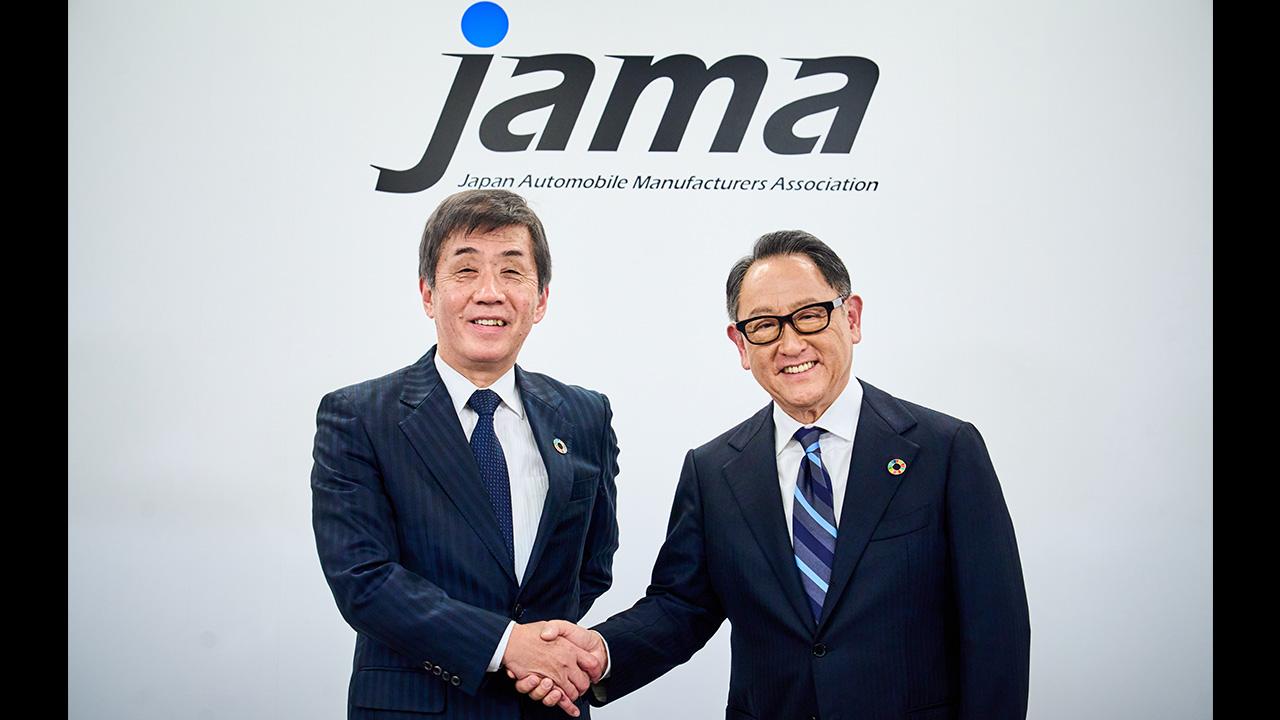
The first step towards a new mobility future begins with logistics and commercial vehicles. With Isuzu Chairman Masanori Katayama picked to lead JAMA, what lies ahead?
Concerns about handing over the reins
These statements were followed by questions from reporters.
Taking the time to carefully answer each query, Chairman Toyoda spoke of the concerns he had held for the past two years and his future involvement with JAMA.
Chairman Toyoda (Toyota)
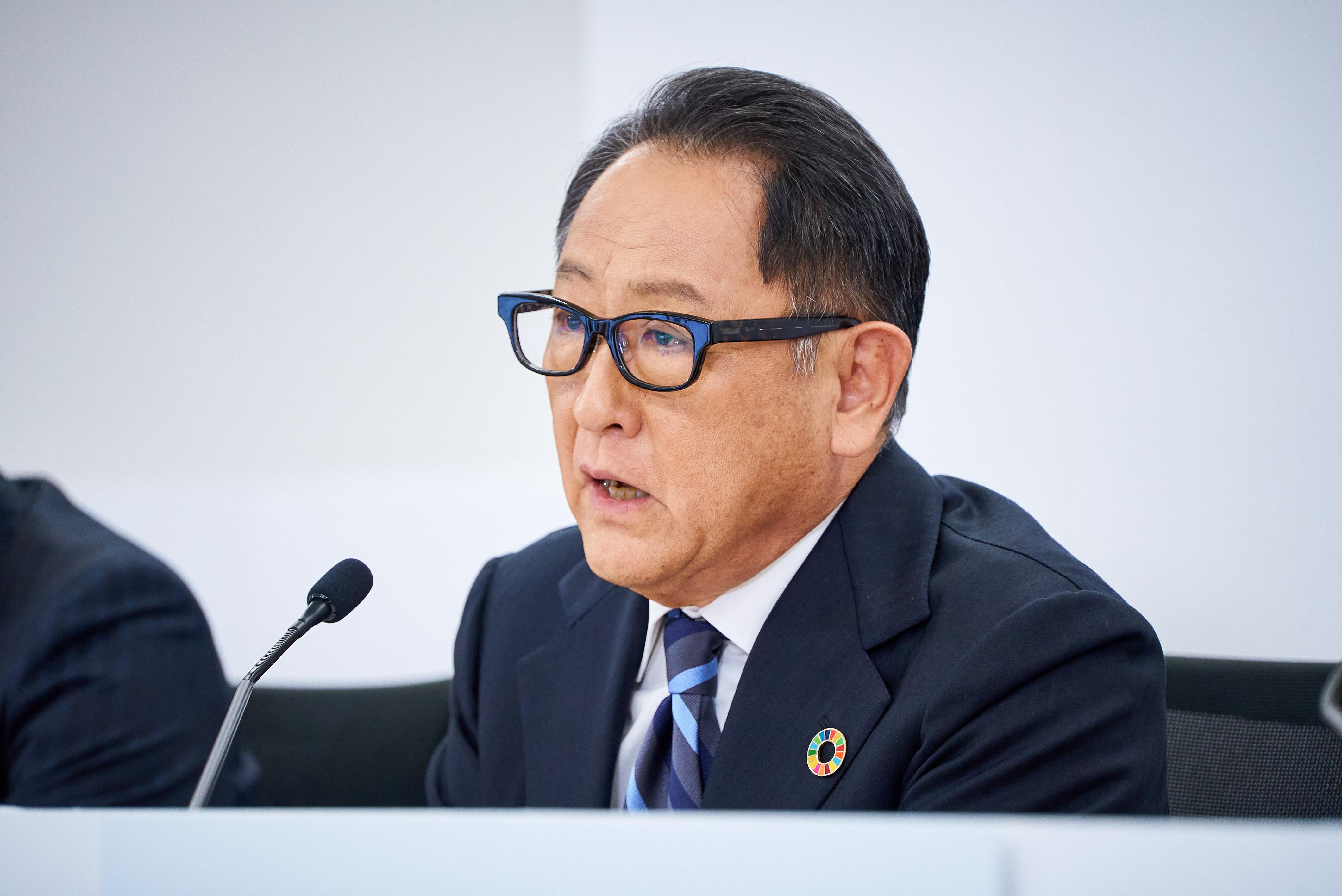
I have been involved with JAMA for 13 years. After becoming president of Toyota, I was asked to serve as (JAMA) vice chairman, chairman, and then again as vice chairman.
I believe those 13 years are what enabled me to enlist the help of many people and transform our motor show into a mobility show.
From the perspective of those going about their daily work, change is not a particularly pleasant prospect. However, every company in the auto industry operates on a global scale.
The Japanese auto industry’s role in the wider world is changing from day to day, which I think makes our industry’s sensors the sharpest in that respect. I believe that (JAMA) has established the structure and foundations for responding to these changes.
For the past two years, however, I have been greatly concerned about how best to hand over the reins (to the next chairman) to ensure that the automotive sector remains an indispensable industry for this country.
The question I’ve been wrestling with is not “Who will be the next chairman?” but “What will be the priority areas?”
Through discussions with the Ministry of Economy, Trade and Industry, led by our vice chairmen, we identified seven issues and (by considering the most urgent) determined who would best serve as the next chairperson.
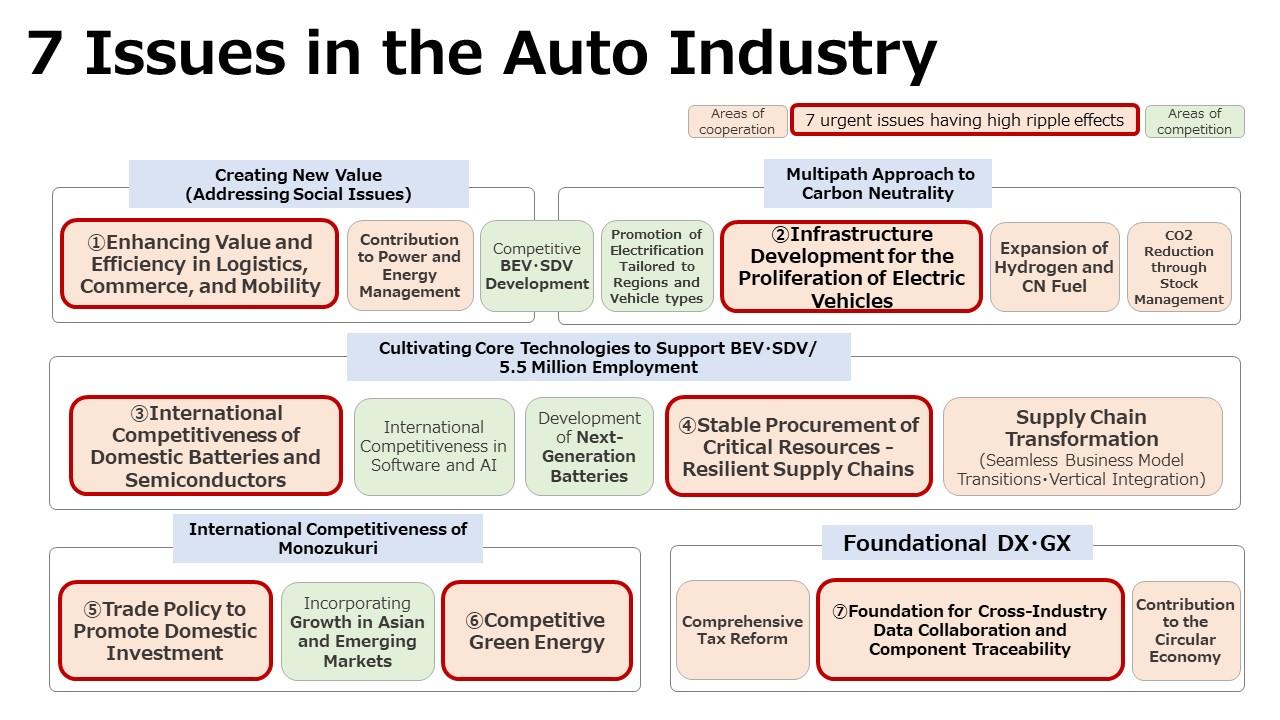
As for my future involvement with JAMA, I am not moving away from the auto industry, and in my driver role as Morizo, I hope to work on energizing the industry from behind the wheel.
Incoming Chairman Katayama added the following comments.
Incoming Chairman Katayama (Isuzu)
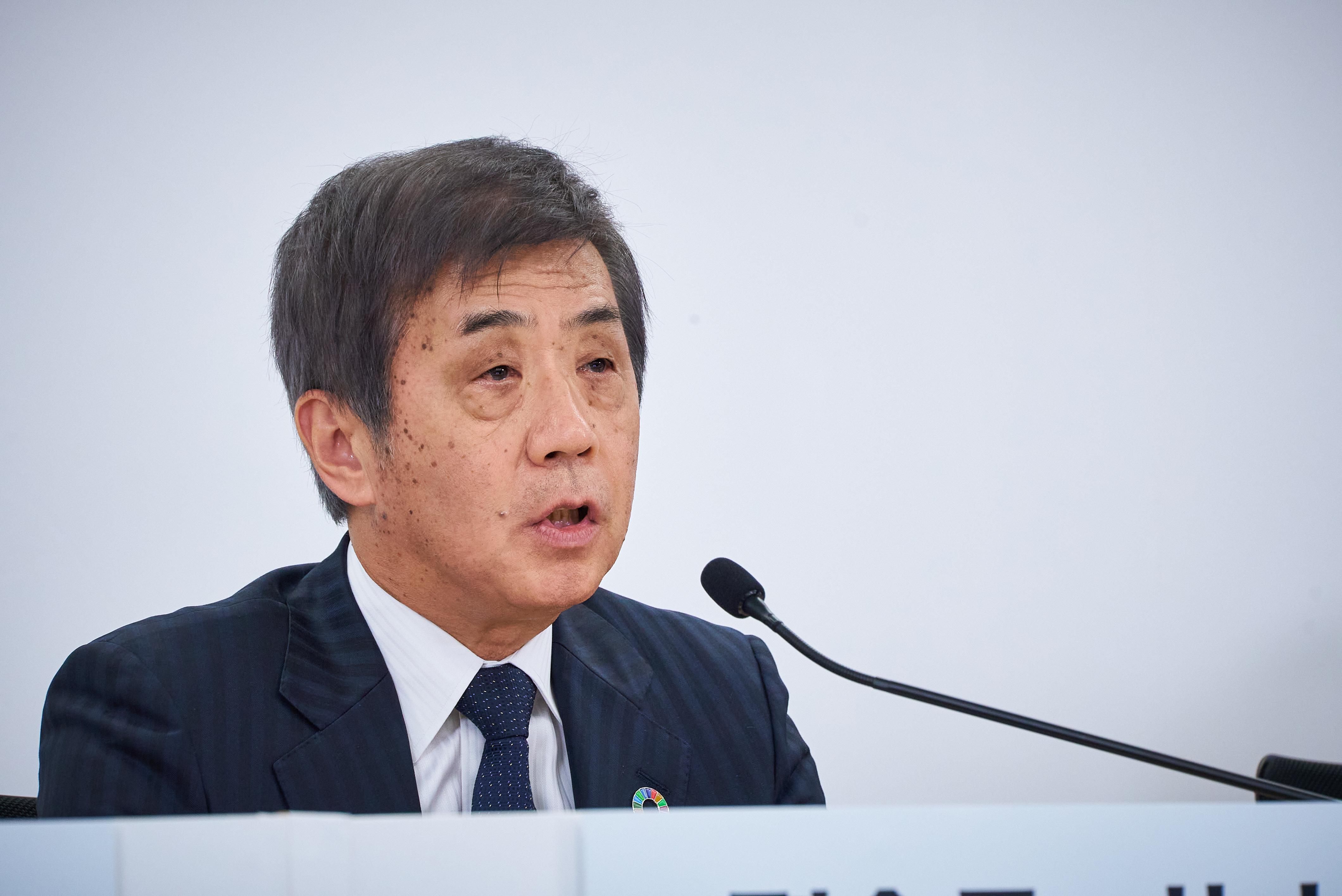
Regarding Chairman Toyoda’s future involvement with the automotive industry, I have heard that, at Keidanren’s request, he will continue serving as chairman of the Committee on Mobility.
In my opinion, Akio Toyoda understands the auto industry better than anyone. He is its biggest supporter, and I hope to continue working together through JAMA, joining forces to expand the 5.5 million-strong mobility industry to 8.5 million people.
Katayama went on to discuss the key points in tackling the 2024 logistics problem.
Incoming Chairman Katayama (Isuzu)
First, to boost logistics efficiency, we need to digitize the forms and other data that we possess.
Although we have long used connectivity to obtain a wide range of information, sharing that information has lagged, and we strongly want to promote it.
Next is the prospect of autonomous driving. With national-level expressway trials set to begin, we want to be actively involved.
In addition, we will also strive to broaden the pool of drivers. For example, one area we want to explore is making work environments more welcoming to female drivers.
Next, Akio was asked why the new team is taking over in January, given that his term as chairman would last until May.
Chairman Toyoda (Toyota)
For me, I feel that I’m handing over the reins today.
Upon becoming chairman at Toyota, I originally tendered my resignation about a year ago. I myself had proposed the rule, which has since been adopted, that JAMA should be run by those at the level of top executives and CEOs.
In light of that, I offered to resign because I felt that it would not be right for me as chairman (of Toyota) to remain in this role at JAMA.
When I did so, others insisted that I stay on for another year. Over that period, being joined by vice chairmen from across the Japanese auto industry made me realize that our country’s full lineup of motorcycles, mini, heavy-duty, and passenger vehicles is a strength unmatched anywhere else in the world.
To take advantage of this strength amid the rise of CASE technologies and other once-in-a-century changes, we agreed that the position should be filled by the person who could offer the most appropriate expertise at any given time.
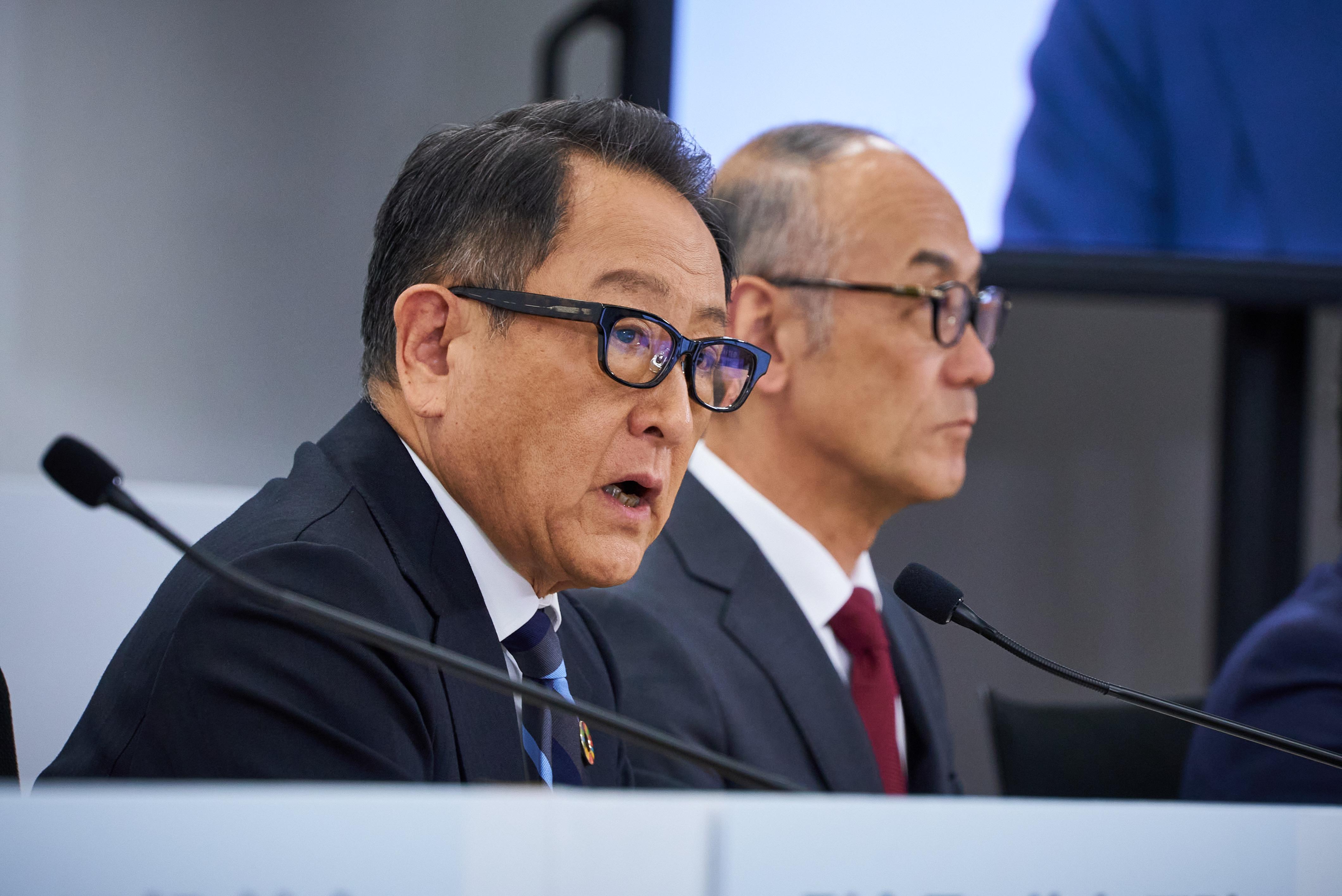
With that, instead of waiting for (my term to end in) May, we decided it would be best to start as we move into the 2024 calendar year.
In particular, with logistics facing what’s known as the “2024 problem,” we felt that the timing was right for the new team to tackle this issue starting in January.
Please understand that we made this decision after extensive discussion, believing that it would earn the confidence and trust of all 5.5 million people involved in the automotive industry.
He then continued.
Chairman Toyoda (Toyota)
We have changed the chairman and vice chairmen positions from a rotating schedule among the three passenger car companies to a team that reflects the industry’s full lineup. The slimmed-down board has also become a forum for discussion between the various company heads.
Whereas talks previously revolved around formalities, I believe we have also laid the foundations for competing peers to discuss areas of cooperation more earnestly and openly.
Above all, we want Japan to be more competitive and hope that the automotive industry can be used to that end.
Japan’s auto industry employs 5.5 million people. We believe that transforming into a mobility industry could generate new jobs that would bring this number to 8.5 million, and in turn, even 10 million. I hope you will continue to follow and support JAMA.
Incoming Chairman Katayama (Isuzu)
To put it another way, the fact that someone from a commercial vehicle manufacturer will become chairman shows how far JAMA has evolved.
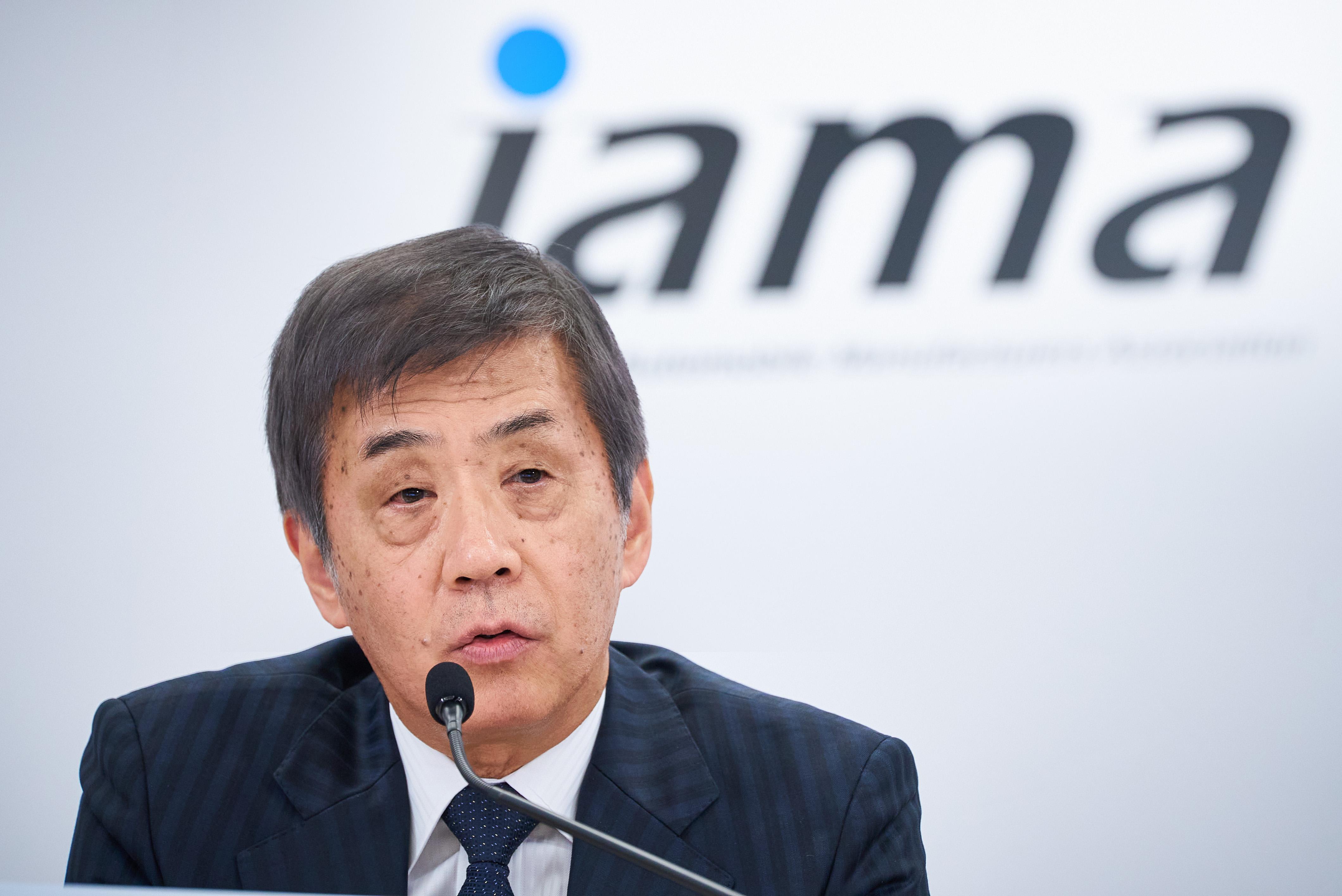
Among the vice chairmen, we talked about how to ensure JAMA’s sustainable management, and the answer we came up with was to lead as a team.
We were also able to identify our seven key issues, which greatly clarified what we need to do.
Ownership (of the issues) has also become clearer, which made me feel that, with everyone’s backing, even a commercial vehicle manufacturer such as myself could serve as chairman. That allowed me to accept the position.
Chairman Toyoda was then asked what message he most wanted to convey in Japan and abroad.
Chairman Toyoda (Toyota)
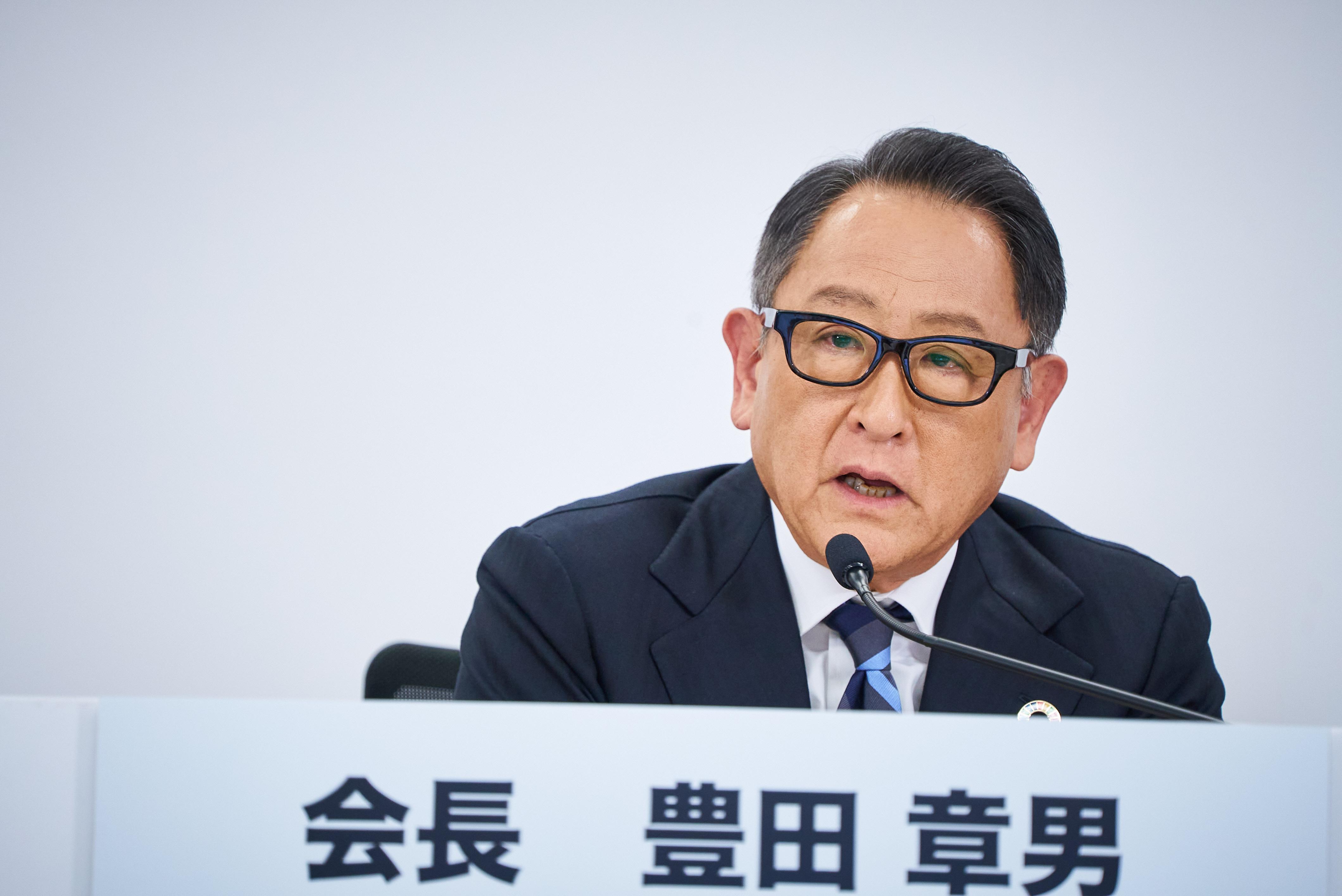
When it comes to carbon neutrality, I certainly don’t have the ability to foretell the future, but I made an effort to look at the hard facts.
My remarks were about contributing to a future while providing greater convenience and solving the difficulties of those 5.5 million people and everyone who shares in the benefits of mobility.
At this year’s G7 (Group of Seven) Hiroshima summit, the Japanese government led the world in advocating a multi-pathway approach, which I believe shifted the momentum.
What’s crucial is that everyone, down to ordinary users, works to address global warming according to their country’s energy situation, with individual nations and companies focusing on their respective strengths to do what they can right now.
Japan’s auto industry competes globally with a full lineup, which for some companies means providing mobility to a billion people without adequate electricity access or utilizing 300 million tonnes of cow manure.
If Japan’s example serves as the base, mobility can help transform the future. That’s what I most hoped to convey.
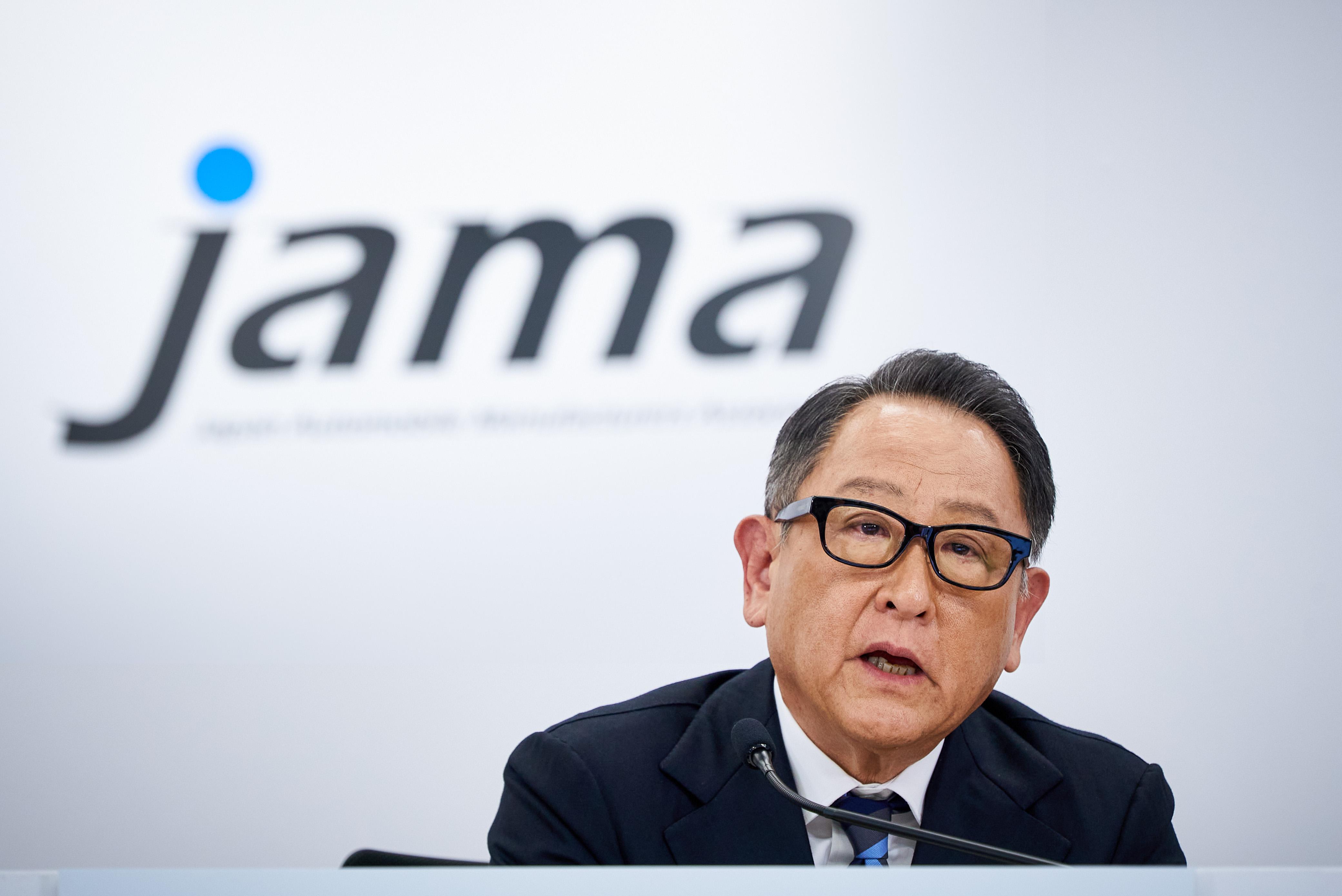
Change takes time. I don’t think it should come at someone else’s expense.
The future is ours to create together, and I believe everyone changes at their own pace.
Whether as JAMA chairman or simply as a carmaker, I certainly could never tell those who have devoted their lives to the automobile industry that the future holds no place for them.
We are working from the user’s perspective and the market perspective, exploring how our technologies can be useful in contributing to the future. I hope you will continue to support us.
Also on stage for the press conference was the entire cohort of JAMA vice chairmen. Each shared their thoughts on the structure established under Chairman Toyoda.
Vice Chairman Yoshihiro Hidaka (Yamaha)
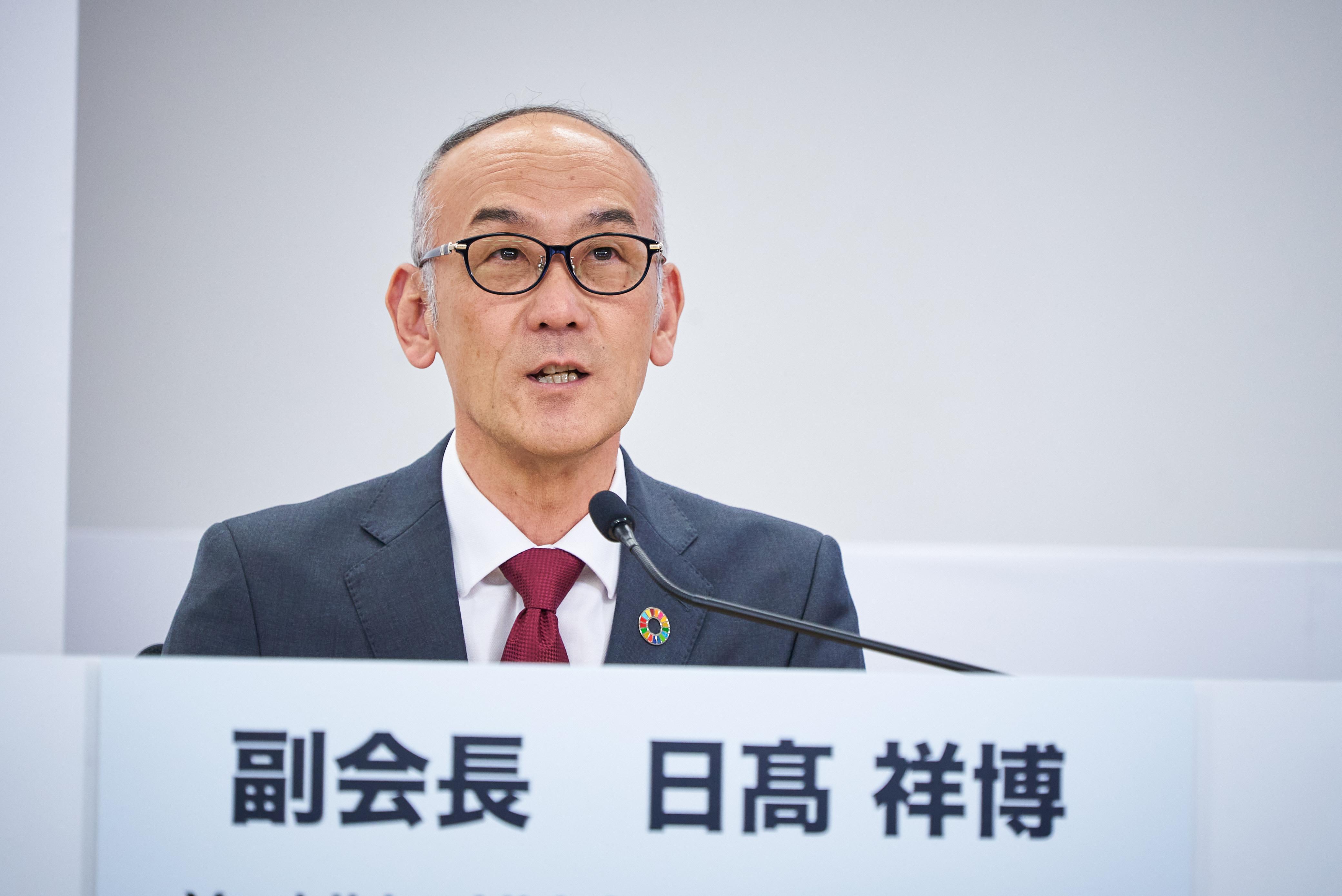
The main responsibilities (in addressing the seven issues) have been assigned, and we will continue sharing information as we move forward as one.
Vice Chairman Toshihiro Mibe (Honda)
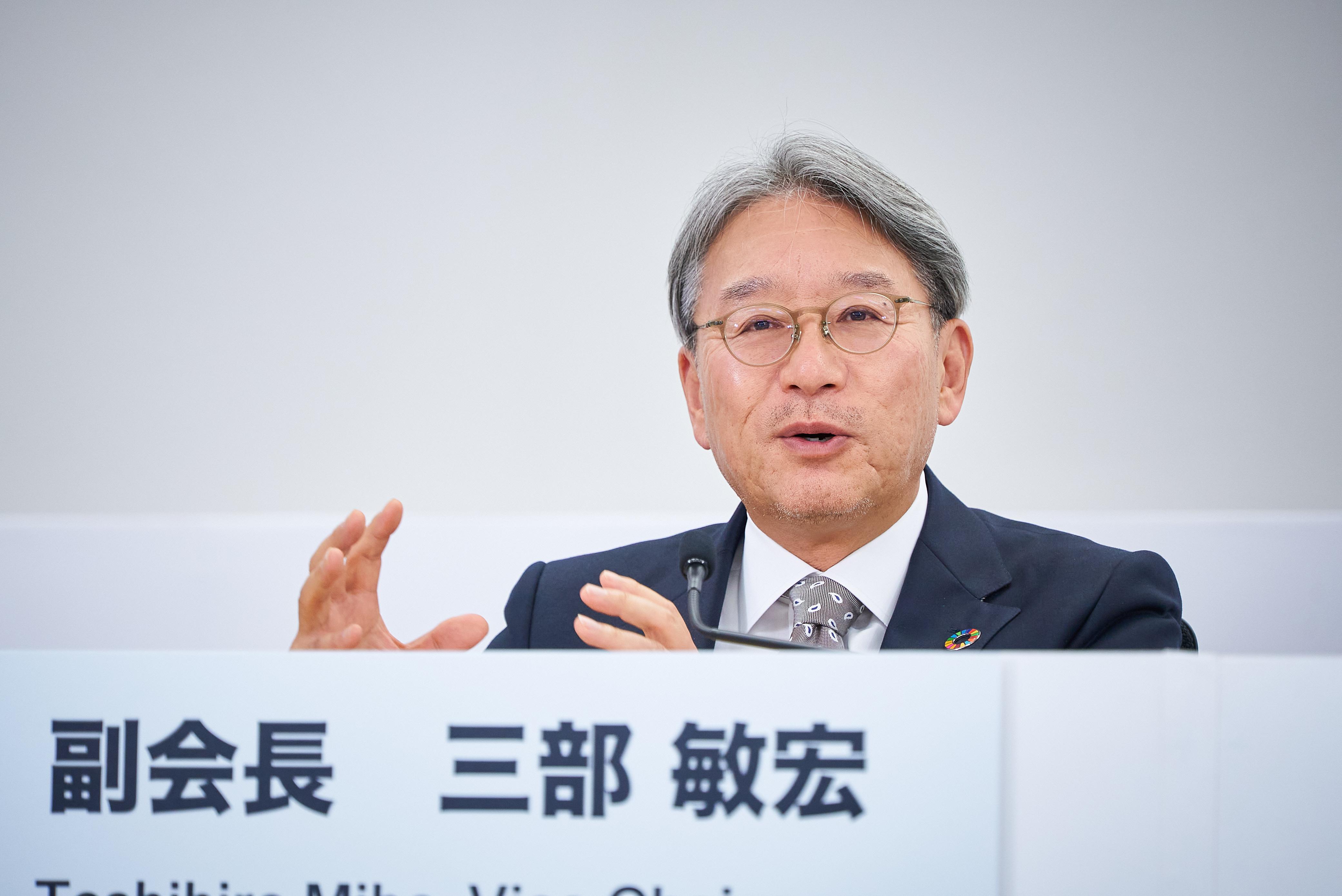
I personally see this period of change as a golden opportunity. As JAMA, we will take the lead in driving the transformation to a mobility society.
Vice Chairman Toshihiro Suzuki (Suzuki)
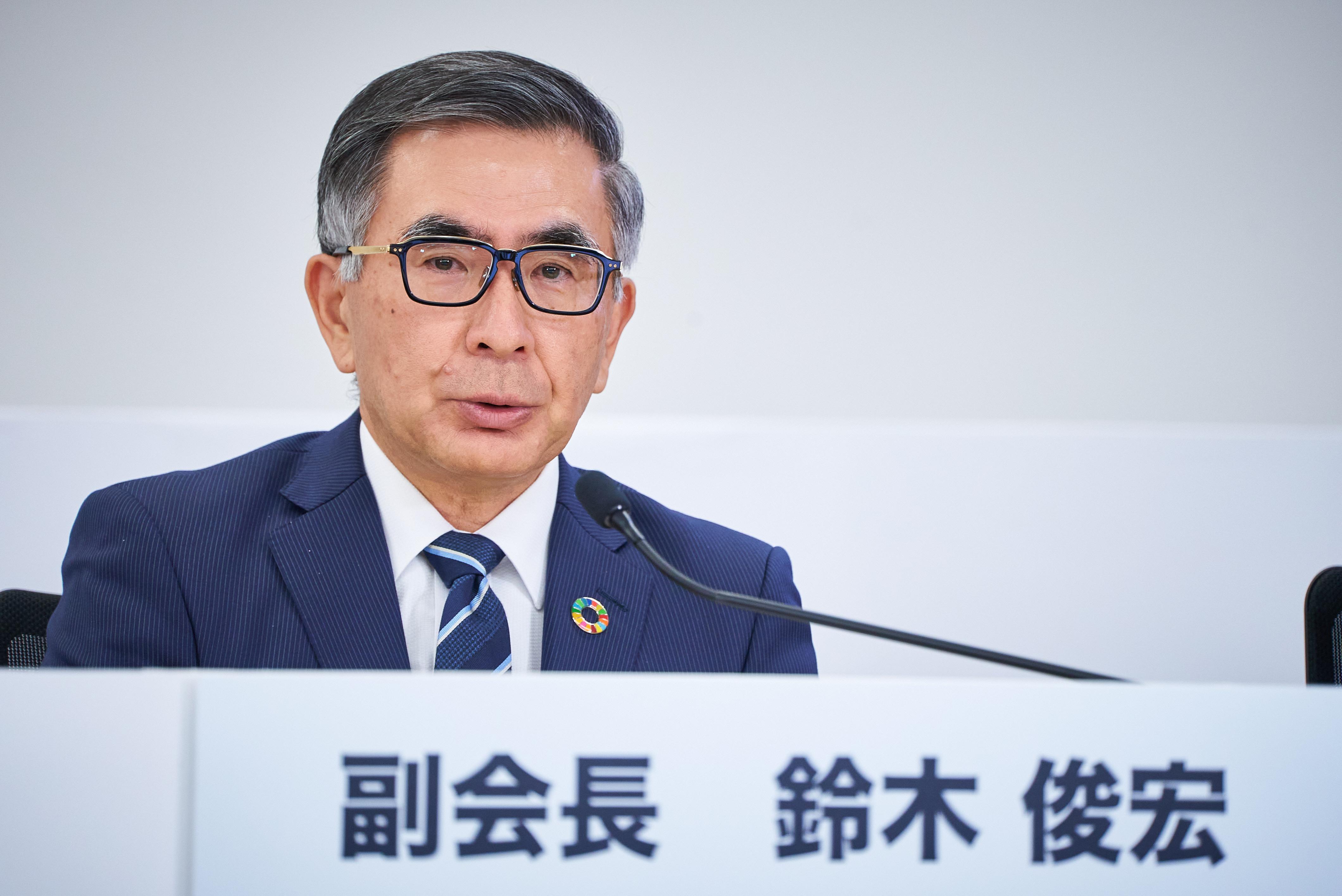
Working as one with our new Chairman Katayama, JAMA will strive to boost Japan’s industrial strength and competitiveness and solve issues such as the global environment.
Vice Chairman Makoto Uchida (Nissan)
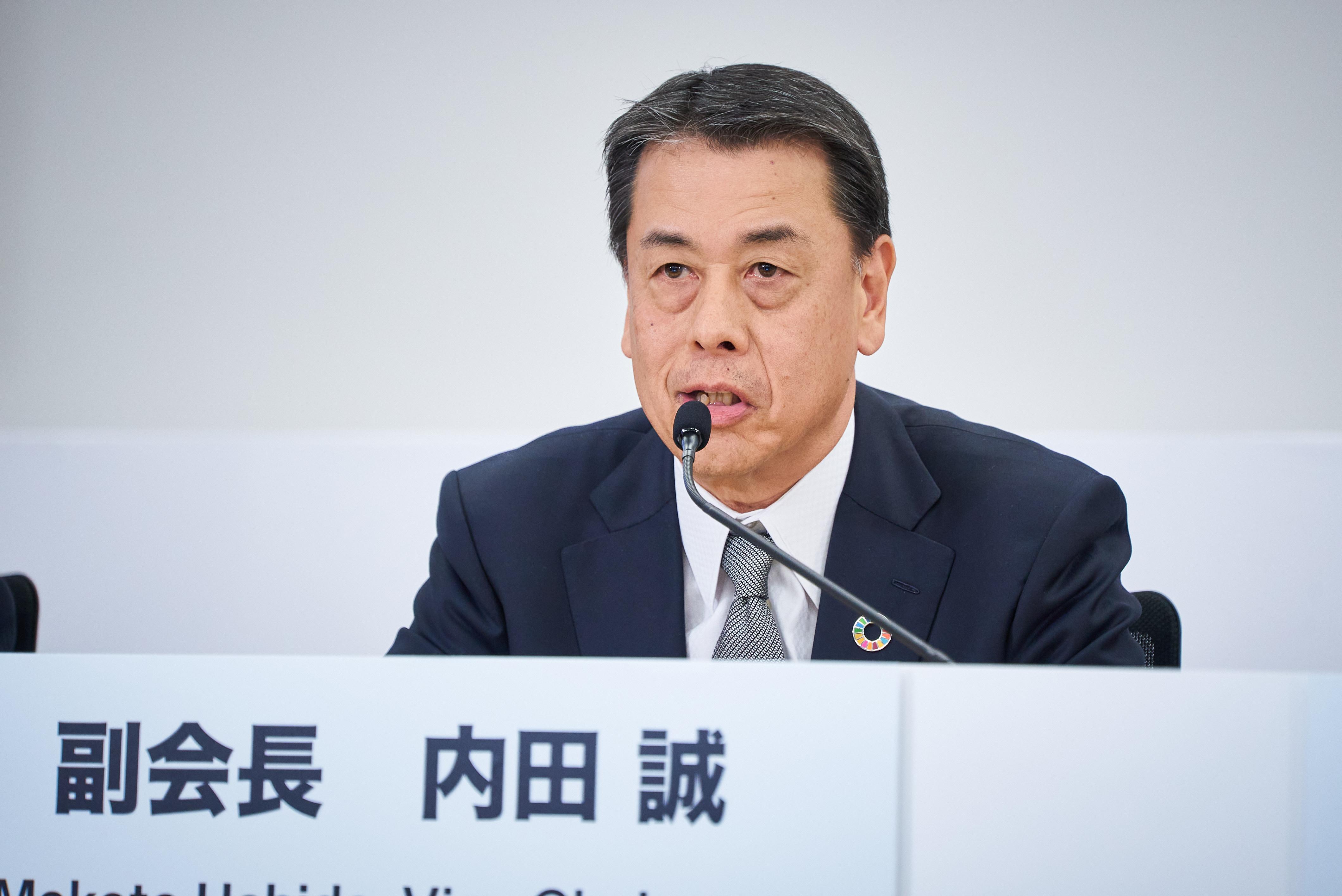
All of us here are determined and committed to helping enrich people's lives, safeguarding jobs, and upholding our social responsibility.
Vice Chairman Koji Sato (Toyota)
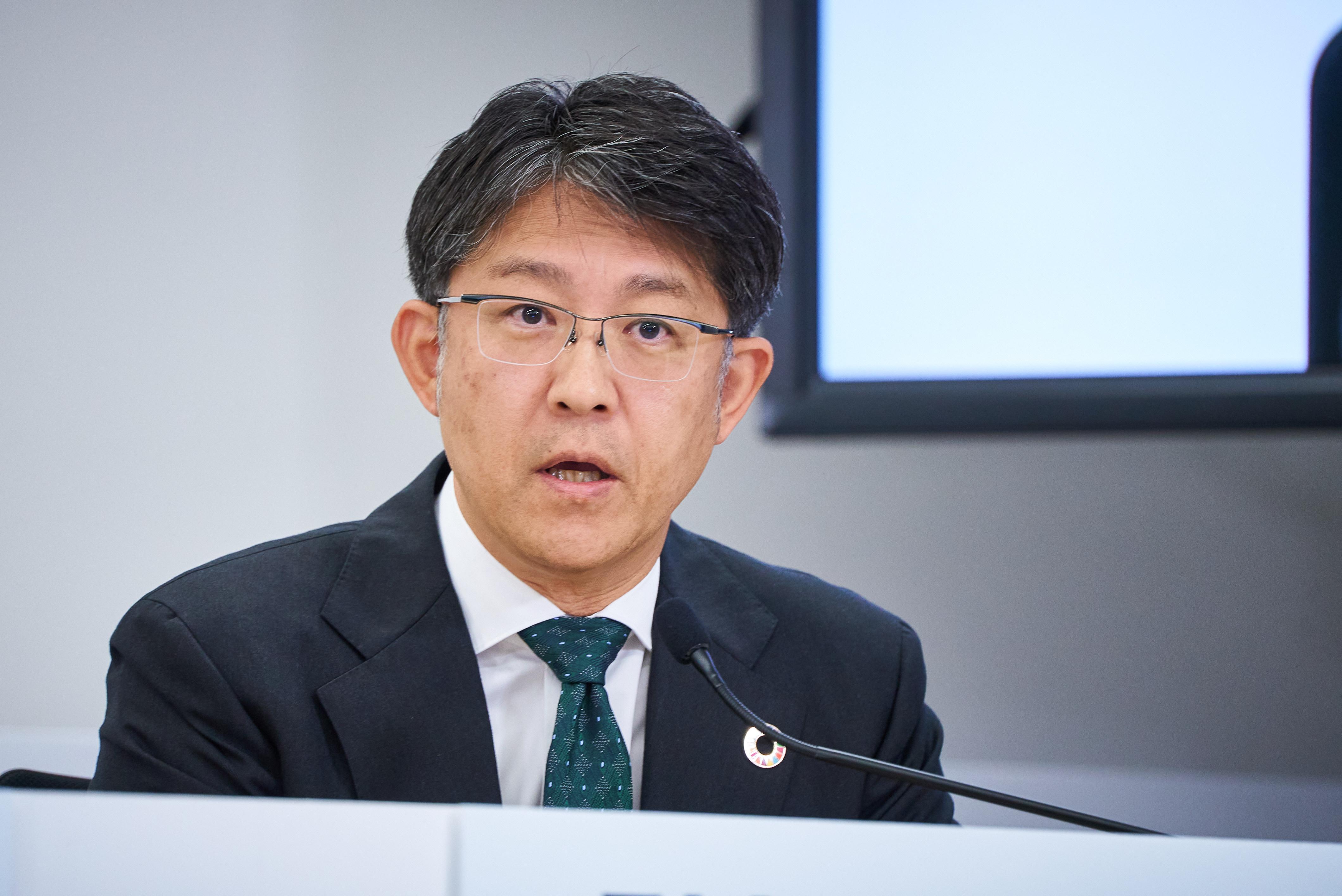
Today, JAMA is a place of vigorous discussions within the board, and incredibly frank and lively conversations between the vice chairmen. Our new Chairman Katayama is a passionate leader, and we will continue moving forward as a team.
Vice Chairman Seiichi Nagatsuka (JAMA)
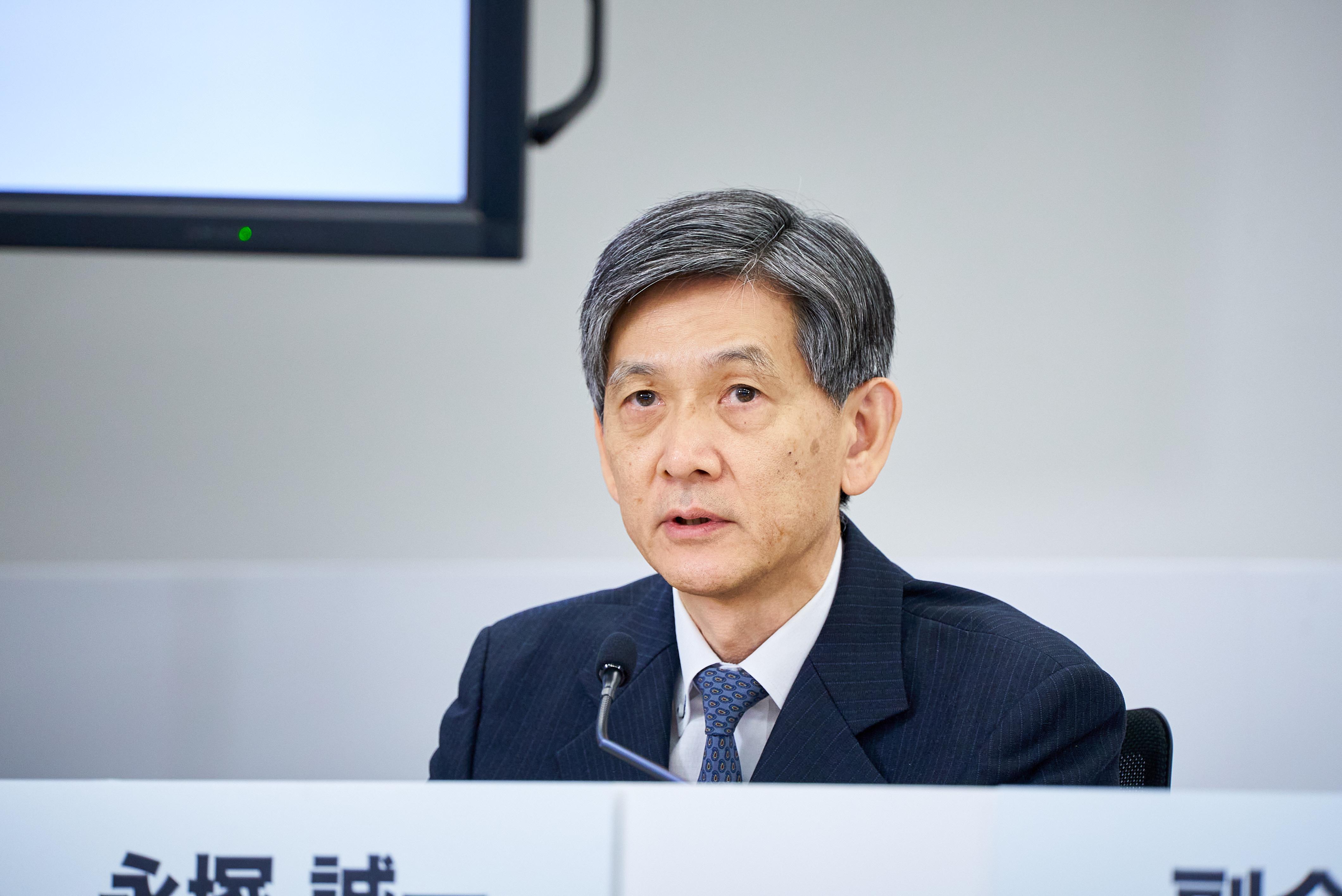
Building on the foundations laid by Chairman Toyoda, I look forward to working with the other vice chairmen and directors to overcome the difficulties we face as we transform into a mobility industry.
These comments showed a unanimous resolve to support incoming Chairman Katayama as a team.
With the new leadership set to take over in January, all eyes will be on JAMA’s future direction.

